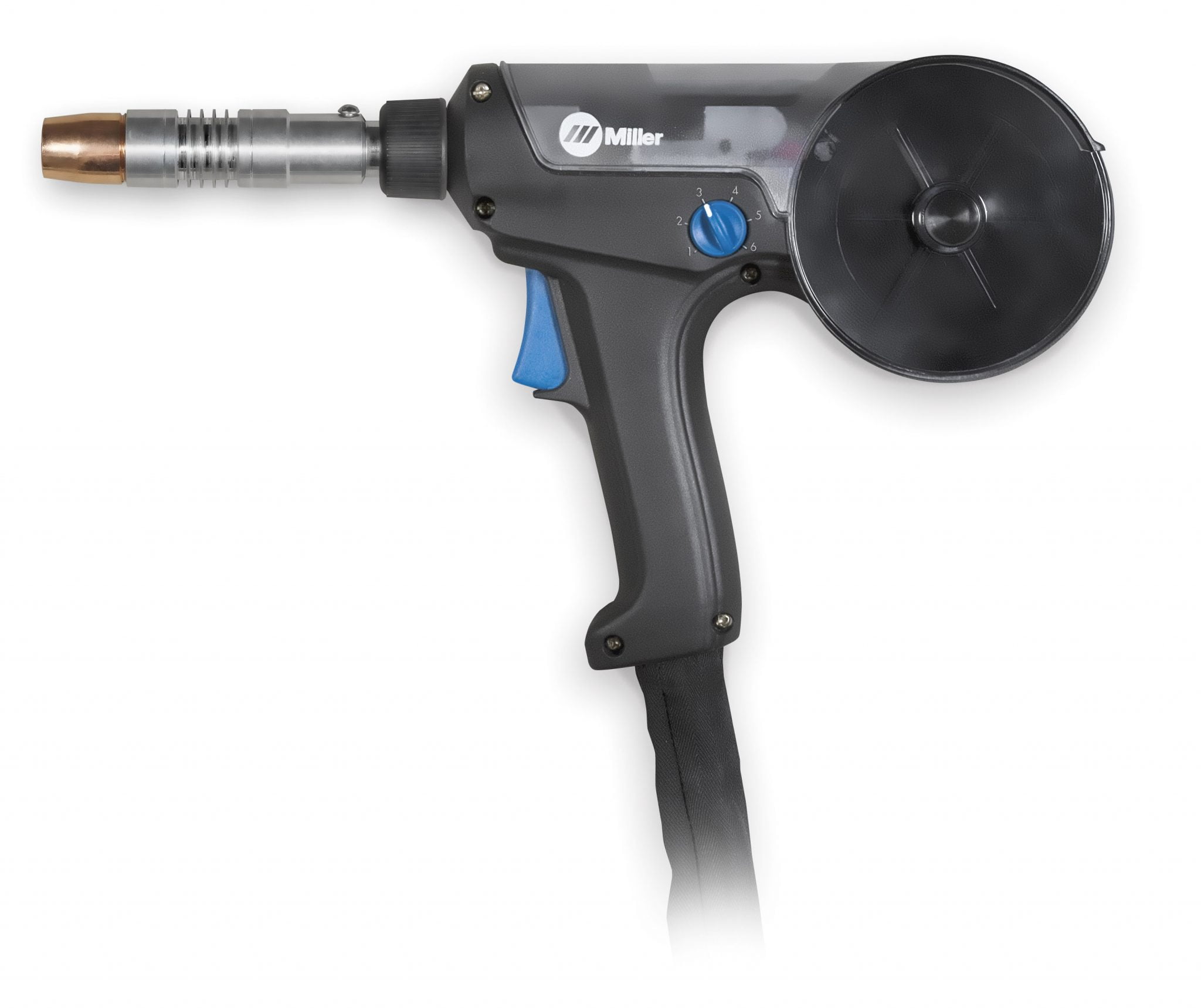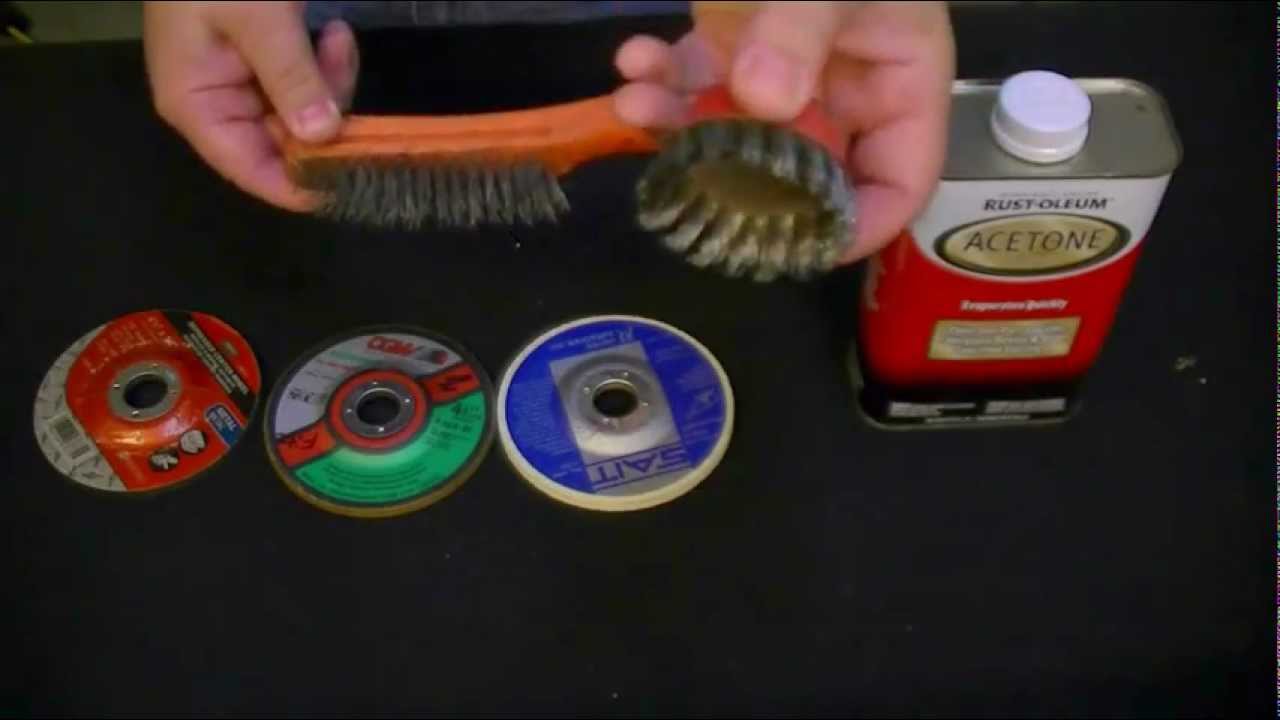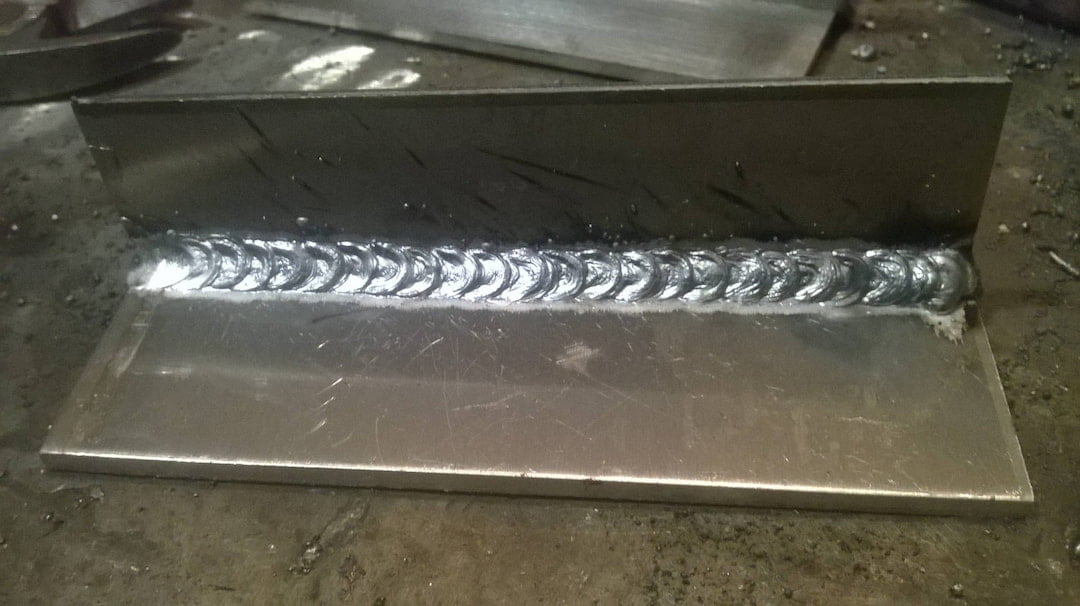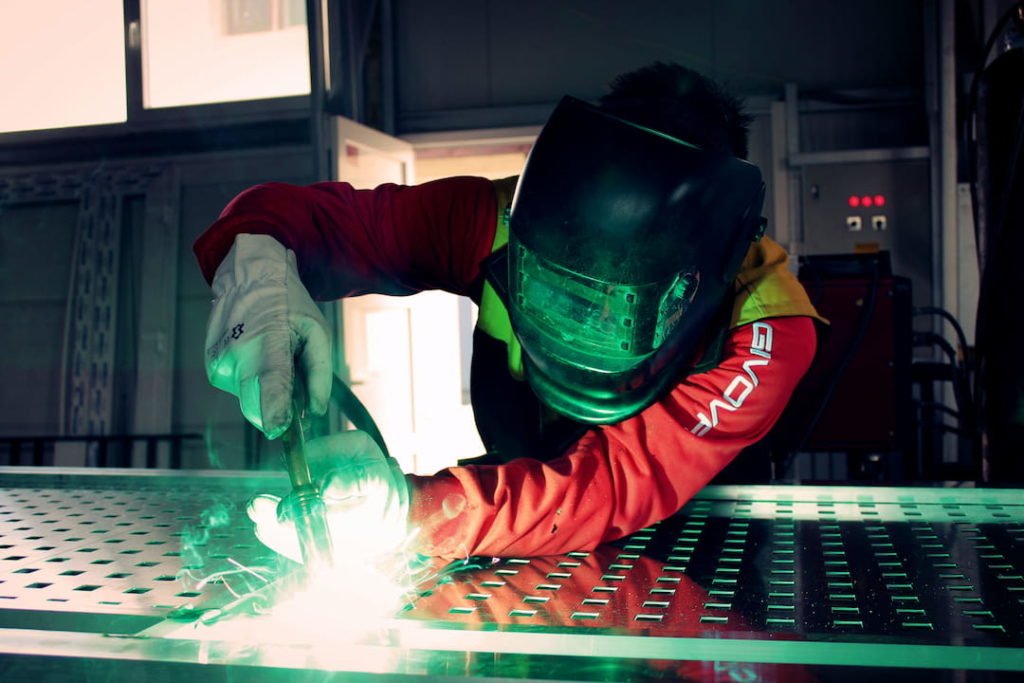You've learned a lot about welding and tried a few techniques. You're starting to master the more advanced methods and have a project you've been wanting to try for a while now. The only problem is that it's aluminum, and you're a MIG welder. Now, learn about MIG welding aluminum.
Table of Contents
Key Takeaways
- Aluminum is soft and welding it takes special knowledge and techniques
- To MIG weld aluminum, you need materials that are 14 gauge or heavier
- If you want to weld something thinner, you may need to purchase a specialized MIG or AC TIG welder that is pulsed
- Aluminum is very prone to surface oxidation and that will contaminate your MIG weld so clean it thoroughly
- You usually need 100% Argon (pure or mixed with Helium) for MIG welding aluminum.
The good news is that aluminum welding is entirely possible. It requires some special MIG welding aluminum settings, and aluminum MIG wire in your best MIG welder, but once you’ve got all the materials you need, that aluminum project is as good as done!
Successfully MIG Welding Aluminum
Successfully MIG welding aluminum can be complicated. You really need to have the right technique for the best possible work. After you've mastered MIG welding basics, this guide is going to help you learn how to MIG weld aluminum successfully.
The Key to Aluminum Welding
Aluminum is a pretty soft metal if you’re working with its pure form. It has a lot of different uses but it requires additional alloys to make it strong enough for welding projects. The properties of aluminum are very different from those of steel, so welding aluminum has some very unique challenges that you may not have experienced before with welding steel. For example, it distorts much easier and is incredibly sensitive to heat input. As long as you’re careful, you will find that you can easily MIG weld aluminum.
Tips for Getting Started
There are a few quirks to keep in mind when you’re MIG welding aluminum. Make sure that you start with the right welding equipment (like a welding helmet) and follow the right procedures for a successful weld.
Consider how thick your material is. To successfully MIG weld aluminum, you need materials that are 14 gauge or heavier. The output capacity of your welder will determine which one is best for you. If you want to weld something thinner, you may need to purchase a specialized MIG or AC TIG welder that is pulsed. We've covered MIG vs TIG welding fundamentals before.
Make sure your aluminum stays very clean. Before you begin welding, you will need to clean it thoroughly. Remove all of the lubricants that may be in the material. Degrease it with a stainless wire brush then remove the oxide layer. It is recommended that you use a hand or cup wire brush, but if you use power wire brushes then keep your RPMs and pressures low so you don’t smear the material’s surface. This will trap oxides and impurities. You should also buy a separate brush for your aluminum projects so you don’t contaminate your base material and cause any defects when welding.
Use the right gas. Aluminum is not a ferrous metal, so it requires a pure argon shielding gas (100% argon shielding gas). You should try to keep the flow rate between 20 to 30 cubic feet per hour.
The best process for MIG welding is a spray transfer. This is a smooth way to transfer molten metal into the pool from the end of your electrode. When they cross the arc, the droplets will be smaller than the electrode. This prevents your spray transfer from short-circuiting and increases the efficiency of and deposition rates.
Just remember that this method involves a very high level of heat, so you need to create a large weld pool with great penetration and this can be very difficult to control.
Choosing the spool gun and wire feed system is a critical aspect of an aluminum MIG welding process. Usually, aluminum gets fed through a spool gun using a push-pull system. These guns will improve the way softer wires are fed through. The spool guns remove the possibility that your aluminum wire will knot itself into a birdnest because it only feeds a few inches at a time.
You also need to know that you have the right filler metal. You need to know the alloy of your aluminum and the conditions your finished weld will be enduring. Most projects use ER4043 and ER5356 for the job.

MIG Welding Aluminum Tips and Techniques
Now that you’ve got some of the basics, here are some more in depth tips and techniques to ensure a smooth MIG weld aluminum.
Troubleshooting Common Problems
There are a few ways to troubleshoot problems when they arise during your welding project. In comparison to TIG welding aluminum, here are some of the more common issues with MIG welding aluminum along with their solutions.
If overheating the base material causes melt through and burn through, then increase your travel speed while making shorter welds.
Spread the heat around by moving around the part. Use thicker materials when possible, and change the design of the joint or use a different welding process if necessary. Try to reduce any gaps.
If you’ve got a dirty weld, then use a push instead of a pull angle. Don't drag. Increase your voltage to get spray transfer. Make sure that you have thoroughly cleaned your base metal using the right technique. Check to make sure you have the right shielding gas, which is pure Argon preferably.
If you’ve got the wrong welding machine setting, check the manual for your welder to makes sure your settings are optimized. If the aluminum wire burning back to your contact tip starts during your weld (or when you finish) then make sure you’re maintaining an adequate distance between your work and your tip. You should also make sure the contact tip size, gun linger, and drive rolls are all correct for the wire diameter you’re using on the project.
If your wire bird nests (knots up into a big pile) in front of your inlet guide, then adjust your drive roll tension. Make sure your rolls match the diameter and replace your contact tip. Check your pressure adjustment on your spool gun’s hub.
Factors to Consider when MIG Welding Aluminum
When you are welding aluminum, you also need to think about how to properly start and finish the job. Here are some key points to remember.
Preparation for MIG Welding Aluminum
You need to clean your aluminum before you start your weld. Aluminum is very prone to surface oxidation and that will contaminate your MIG weld.Clean it with a solvent first. This will remove all of the oils. Acetone is the best option for aluminum because it won't leave a residue.

Use a wire brush that hasn't been used on any other materials and move in one direction back and forth. Don't use circles. Keep brushing until you've removed the sheen on the aluminum.
Power brushes shouldn’t be used, but if you do use one then keep your speed low and use a fresh pad. You can also use a flap disc and grinder to clean your aluminum. Just make sure the disc has been designed for welding on aluminum.
Once clean, soot can still form on and around your weld. If you start noticing a lot of soot, you didn’t clean your metal well enough and it might be a good idea to do so before continuing.
Aluminum MIG Welding Gas – Shielding Gas to Be Used
You will need shielding glass for metal inert gas welding. You can purchase a cylinder or a tank. Try to get a very small tank if you don’t weld very often. Unlike with MIG welding galvanized steel, you usually need 100% Argon gas for welding aluminum.
If you’re welding thick pieces of aluminum (1/4 to ½ inch) then you may need to mix the Argon with Helium for better penetration. You will still want at least 75% argon for this.
Your flow rate should be 20 to 30 cubic feet per hour. If you’re getting a lot of soot deposits during your weld or are in a location that affects gas coverage, you may need to go a little higher.
Polarity Setting
Aluminum requires a specific type of polarity. To weld aluminum, you need DCEP (direct current electrode positive). This means that you should connect your MIG gun an (or spool gun) to the positive terminal on your welder. Check your settings to make sure you’re using the right polarity.
Welding Techniques for Aluminum Welding
Here are a few common techniques that are good to master before beginning MIG welds of aluminum.
Increase the Welding Speed
Forehand welding is a common technique used with aluminum welding. A lot of people also prefer to use stronger beads. Weaves are possible, but it increases the likelihood that you will overheat the joint.
If you’re out of position, you should use a very fast whipping technique. You can use a steady motion, but if you do then you must stay ahead of your weld puddle. This technique does it much faster than other MIG welding aluminum methods.

Master the Push and Pull Methods
For metal inert gas welding, you should know both the push and pull methods. Aluminum welds work best with push welding because the shielding gas will cover your weld puddle better.
When you try to pull the weld puddle in aluminum welds, you will end up with a dirty weld. This is because the weld puddle went without gas coverage during your work. Occasionally, you will need to pull, so get good at it.

Right Angle to MIG Weld Aluminum
When MIG welding aluminum, the push angle works best. This is because a push angle will put your argon shield over the arc rather than over other hot areas of your weld puddle. This eliminates the oxidation that occurs if your weld isn’t shielded from the atmosphere.
If your weld prohibits using a push angle you can still pull.
Just remember that it may help to increase your gas flow for this angle.
Need for Removing Oxide
Oxide causes major impurities in your welds. It is important to remove oxide because aluminum has a high tendency to oxidize rapidly, and this will contaminate your weld.
When welding aluminum, soot can quickly build up. This is also aluminum oxide. This leads to an inefficient burn that can play havoc on your wire speeds and shielding and ruin your contact tips. Make sure that you remove the oxide layer from the aluminum to create a smooth weld without any impurities.
Oxide has twice the melting temperature of aluminum. This means that if you don’t remove the oxide, you won’t be able to fuse your joints together properly.
Length of Wire Stick-Out
Although MIG welders typically avoid short stick outs for short circuit MIG welding, this isn’t the case with aluminum. To successfully weld aluminum, you need to use spray transfer. Longer stick outs work better with spray transfers. On average, a ¾ inch stick out works well. Shorter stick outs with aluminum welding can result in burned contact tips.
Using the MIG Spool Gun (Optional)
Although it is optional, a spool gun is recommended when aluminum welding . The MIG aluminum wire is significantly softer than steel wire, so it will bird nest inside your cable liner without help. The wire is also less stiff than mild steel wires, so you compensate for that with the spool gun by having the aluminum wire travel a much shorter distance as the spool sits in the mig gun itself. So it is easier than MIG welding mild steel wire.
These spool guns are best used by DIY welders because most of them can only fit a small 1 pound roll inside the mig gun. These work well with aluminum because the aluminium wire won’t have to go through the MIG hose, which is the most likely point that a birdnest will occur.
As usual, here’s a helpful YouTube video about MIG welding aluminum:
Our final advice, as usual, practice, practice and practice!
FAQs
1. Can you use a MIG welder to weld aluminum?
Yes, you can use a MIG welder to weld aluminum. Aluminum can be welded down to a thickness of 3 mm using most reliable welding machines. Using specialized MIG or TIG welders with pulse capability may be necessary to successfully weld materials thinner than 3mm. (Note: You'll need a "AC/DC" mig machine like the 202T to TIG weld aluminum.)
2. Do you push or pull when MIG welding aluminum?
You push when MIG welding the aluminum, because the push welding technique yields the highest weld quality. The cleaning action, shielding gas coverage, and weld bead contamination are all improved when the MIG welding gun is pushed rather than pulled away from the weld puddle.
3. Do you need argon to MIG weld aluminum?
Yes, you usually need Argon to successfully MIG weld aluminum. I have welded aluminum without gas, but not for common purposes. The most popular kinds of MIG welders depend on inert gasses like argon to create a tight seal. Without the presence of a gas like argon, ambient gasses will cause the aluminum to deteriorate before it can set.
4. What polarity do I use when MIG welding aluminum?
Electrode positive polarity is required for all metal inert gas welding, including on aluminum materials, but electrode negative is commonly used for flux-cored procedures. Make sure to change your polarity while switching your aluminum wire feed welder between procedures.
5. Do you need AC to MIG weld aluminum?
You won't require a welding machine with AC/DC capability if you're MIG welding because it can be done much more quickly than TIG welding aluminum and you can use your regular DC settings.
